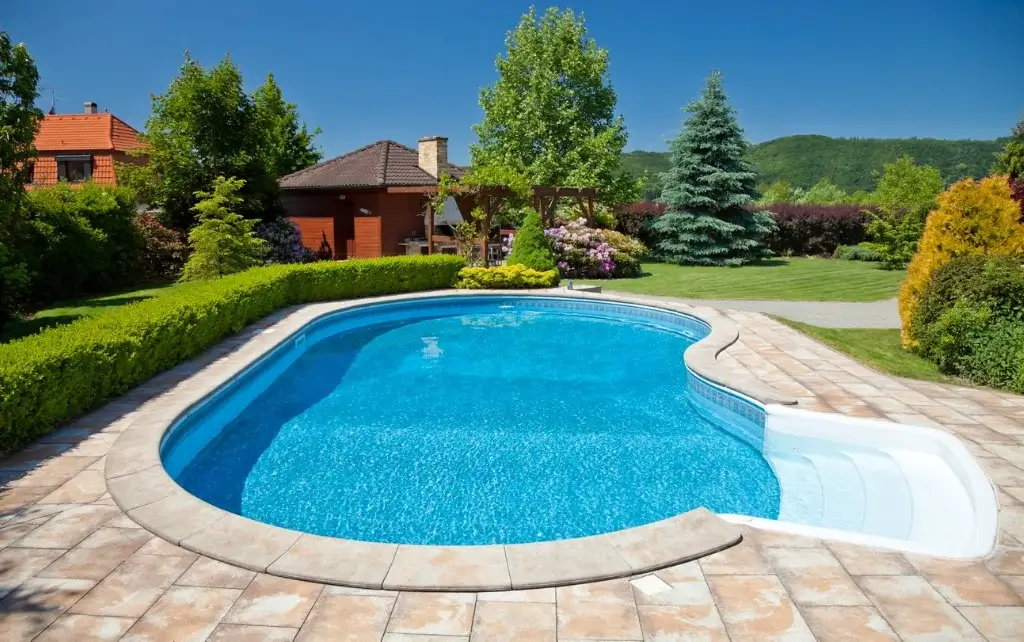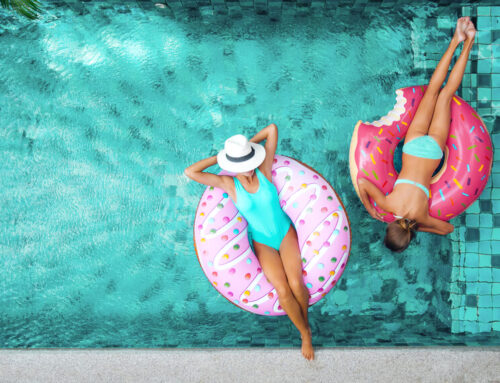Many people believe that saltwater pools are better than chlorinated ones. However, they often hesitate to make the switch because it seems complicated. In this article, we will show you that converting your chlorinated pool to a saltwater one is a simple process. We will also explain the benefits of a saltwater system and discuss the costs involved.
Benefits of Converting to a Saltwater Pool
Saltwater pools contain chlorine, but the chlorine is produced through a chemical reaction when salt is added to the water. Unlike traditional pools, saltwater pools maintain a steady chlorine level, avoiding sudden spikes or drops. This brings several benefits:
No Strong Chlorine Smell: Unlike regular pools, saltwater pools don’t have a strong chlorine smell.
Gentler on Skin, Hair, and Eyes: Saltwater is kinder to your skin, hair, and eyes.
Softer, Silkier Water: The water in saltwater pools feels softer and silkier compared to traditional chlorinated water.
Simpler Maintenance: Maintaining saltwater pools is easier. You don’t need to handle harsh chemicals, making it safer and more convenient.
Lower Costs: Overall maintenance costs for saltwater pools are lower than traditional ones because you don’t need to buy additional chemicals.
GET A FREE QUOTE
CONTACT US AT (305) 590-5263

Cost of Converting to a Saltwater Pool
Converting your pool to a saltwater system isn’t as costly as you might think. You don’t have to drain the pool or build anything new.
You’ll need special equipment, mainly a salt chlorinator or generator. Prices vary, with some models around $800 and others up to $2,000 or more. You’ll also need a sacrificial anode to prevent salt from damaging metal parts and pool salt, both of which are affordable.
Considering labor costs for equipment installation, the conversion typically ranges from $1,500 to $3,000. While there’s an initial cost, you’ll save money in the long term because maintaining a saltwater pool is cheaper.
Pros of Saltwater Pools
Saltwater pools have several advantages. One major benefit is that they need fewer harsh cleaning chemicals like bromine and chlorine. This is because they have lower levels of irritants called chloramines and chlorine byproducts.
Health Benefits
Because saltwater pools have fewer chloramines, they are gentler on the skin and hair. Unlike chlorine, they don’t cause issues like asthma symptoms, rashes, or allergic rhinitis. Additionally, saltwater pools prevent blonde hair from turning green, a problem caused by the interaction between chlorine and copper in regular pools.
Safety
With saltwater pools, you don’t need to store large quantities of dangerous chemicals like bromine or chlorine, making them safer and more convenient.
Cons of Saltwater Pools
While saltwater pools have many advantages, there are a couple of drawbacks to consider:
Initial Expense
Setting up a saltwater pool can be costly. The main expense is the electrolytic chlor generator, which can range from $800 to $2,500.
Metal Damage
Saltwater can corrode metal components like ladder bolts, diving board brackets, light fixture housings in vinyl pools, handrails, galvanized panels, and furniture. To prevent this, you can install zinc anodes to protect against galvanic corrosion.
How to Convert Your Home Pool to a Saltwater Pool
To convert your pool to a saltwater system, follow these steps:
1. Balance the Water in Your Pool by Adding Chemicals
Before adding new equipment, ensure your pool’s water is balanced. Check the pH level (7.2 – 7.8), total alkalinity (80-120 ppm), calcium hardness (200-400 ppm), cyanuric acid (30 – 50 ppm), and chlorine (1-3 ppm). This step is crucial to prepare your pool for the conversion.
2. Add Salt to the Pool
Once your water is balanced, add salt to your pool. The amount of salt needed depends on your pool’s size. Aim for a salt level of 3,200 ppm (parts per million), which is the ideal concentration. You can calculate the right amount using an online salt calculator, consulting a pool technician, or referring to the instructions that came with your new equipment.
Spread the salt evenly across the pool instead of dumping it in one spot. Allow about 24 hours for the salt to dissolve completely in the water. This step ensures the salt mixes thoroughly for an effective conversion.
3. Install Your New Chlorination Saltwater System
Follow the manufacturer’s instructions to install the chlorinator. It’s advisable to have a professional handle this step. The installation process includes:
- Mounting and connecting the chlorinator to an electrical source.
- Integrating the salt cell into the pool’s plumbing system and linking it to the control board.
- Inserting the sacrificial anode.
- Let the pump run for a few minutes before turning on the chlorinator.
4. Rebalance the Water in Your Pool, As Needed
Once everything is running, test the water again to ensure it’s balanced. Make any necessary adjustments to maintain the right pH, alkalinity, calcium hardness, cyanuric acid, and chlorine levels. Regular testing and balancing ensure your saltwater pool stays in optimal condition.

Transform Your Pool Experience with Florida Pool Patio
Are you tired of imagining the perfect pool oasis in your Miami backyard, only to be disappointed by the reality of limited options and subpar service? At Florida Pool Patio, we understand your frustrations. We know that finding the ideal pool design, one that aligns perfectly with your dreams can be a daunting task.
Discover the ultimate in-pool perfection with Florida Pool Patio. Dive into a world of luxury, style, and relaxation right in your Miami backyard. Let us craft a pool oasis tailored to your dreams. Explore our services today and elevate your outdoor living. Your ideal pool paradise awaits.
Contact us now to begin your journey.
Services We Offer:




